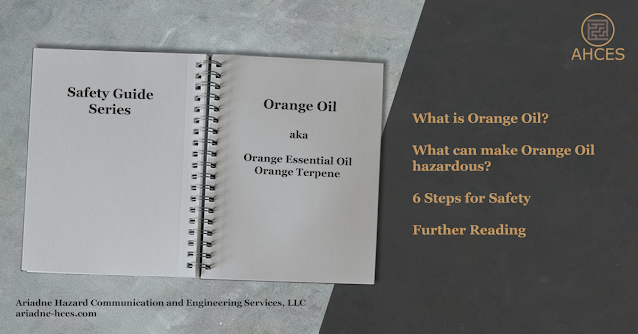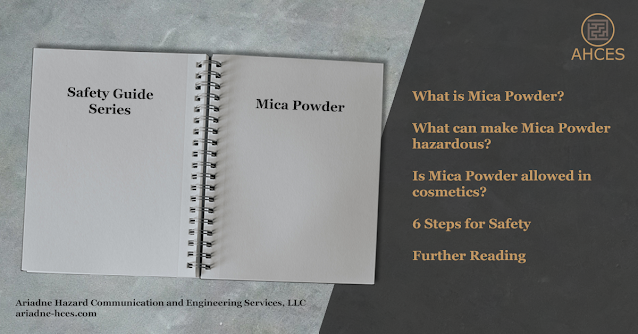Lauric Acid Safety Guide
What is Lauric Acid?
Lauric acid, also known as dodecanoic acid, is a saturated fatty acid which is solid at room temperature. Lauric acid is a major component in both coconut oil and palm kernel oil.
Lauric acid has the CAS Number 143-07-7.
The CAS Number is used to identify lauric acid as an ingredient on safety data sheets (SDS) and other safety documentation. When looking for lauric acid as an ingredient in products, look for the CAS Number within the composition table.
Notable Properties of Lauric Acid
Lauric acid is a solid at room temperature, white in color, with minimal odor described as either soap or bay oil.
What Makes Lauric Acid Hazardous?
Pure lauric acid is corrosive and an irritant; it can cause serious eye damage and irritation as well as skin irritation.
Some sources also indicate that lauric acid can be harmful to the environment.
Due to being a carbon-based substance and solid at room temperature, lauric acid can also form combustible dusts and create a fire hazard.
Lauric Acid Frequently Asked Questions
What is lauric acid in soap?
Lauric acid, found in coconut oil and palm kernel oil, can be used to make soap by reacting with sodium hydroxide to form sodium laurate. Unreacted lauric acid can remain in the soap.
In soap making, lauric acid is reported to create a harder solid soap bar, increase lather stability, and cleaning strength.
Is lauric acid safe for skin?
Pure lauric acid is corrosive and irritating and proper protective equipment should be worn when working with lauric acid.
Dilute lauric acid, found in products including hand soap, does not have the same corrosive severity. Repeated exposure, such as frequent handwashing, can cause a drying effect as natural skin oils are stripped from the skin surface.
Is lauric acid toxic?
Lauric acid is not reported to be toxic in humans.
6 Steps for Safety
Step 1: Read the Warnings
When working with a product for the first time, always read all the safety documents first. This includes safety data sheets, which should be provided by the manufacturer or importer of the lauric acid material. There may also be an OSHA chemical label, FDA cosmetics label, or a Consumer Protection label on the packaging of the lauric acid product. These documents all contain important information on the hazards of the product and instructions on how to mitigate those hazards.
Different compositions in different products may cause additional hazards to be present beyond the properties of pure lauric acid. Be sure to familiarize yourself with the differences between separate lauric acid products.
Step 2: Prepare Your Workspace
Creating a safe workspace, sometimes referred to as engineering control, is a key component of working safely with any potentially hazardous substance.
The hazards of lauric acid are most prevalent when dust becomes airborne, increasing risk of corrosive irritation to the skin and eyes as well as forming a combustible dust, so ventilation is important. Fans which would blow lauric acid dust around should be avoided. Dust collectors and air filters which draw in and capture any stray lauric acid powder are ideal.
If the lauric acid is in a liquid solution, it has the same corrosive and irritant hazards, though cannot form combustible dusts. Working in a space where liquid spills can be contained is important, as well as making sure the work surface cannot absorb the lauric acid solution.
Step 3: Gather Your PPE
For working with lauric acid in a solid form, such as a
powder, you will need the following PPE.
- Respiratory Protection
- A dust mask meant for organic particles will protect the respiratory system from irritation.
- Eye Protection
- Safety goggles which form a protective seal around the eyes or a combination of safety glasses and a face shield can be used to prevent lauric acid dust from reaching the eyes.
- Open safety glasses, which do not have a sealing surface, will not work in preventing dust or liquid splashes from reaching the eyes.
- Gloves
- Basic disposable gloves will prevent lauric acid from touching the skin on the hands and causing irritation.
- Long Sleeves
- Long sleeves will prevent lauric acid from touching the skin on the arms and causing irritation.
- Either a long-sleeved shirt, long-sleeved coat, or disposable sleeves will work.
- Launder any contaminated closing separately to prevent cross-contamination and inform anyone laundering the clothing of the presence of lauric acid so they can take any necessary precautions.
Step 4: Clear Your Workspace
Having a clear workspace is an important part of safety. Clutter can cause accidents and can hide spills.
This is also a good time to double check any engineering controls, like a dust collector, are in proper working order and no filters need to be changed out.
If you are working in a shared space, make sure everyone around you can also remain safe when you are working with lauric acid. For those working at home, this can include family members and pets.
Step 5: Do The Work
If engineering controls and PPE are used properly, working with lauric acid has minimal hazards.
If work cannot be completed in one sitting, be sure to properly seal any lauric acid containers to prevent spills or accidental release when not in use.
Step 6: Clean Up
Dust generation should be avoided when cleaning up. Either a vacuum with a filter or a damp cleaning cloth can be used to pick up spilled or stray lauric acid powder while preventing dust generation.
Be sure to dispose of any waste in accordance with local regulations, which can vary by State and county.
Further Reading
The National Library of Medicine has a PubChem article on Lauric Acid.
Check out the Safety Guide Series Hub for more safety guides.
Sources Cited
American Chemical Society (2018, May 7). Lauric acid. Retrieved April 30, 2024, from https://www.acs.org/molecule-of-the-week/archive/l/lauric-acid-myristic-acid.html
Khan, H. U., Aamir, K., Sisinthy, S. P., Nagojappa, N. B. S., & Arya, A. (2020). Food additive "lauric acid" possess non-toxic profile on biochemical, haematological and histopathological studies in female Sprague Dawley (SD) rats. PeerJ, 8, e8805. https://doi.org/10.7717/peerj.8805
Making Soap Magazine (2017, May 23). Fatty Acids in Soap: Lauric. MakingSoapMag. Retrieved April 30, 2024, from https://makingsoapmagazine.com/2017/05/23/fatty-acids-in-soap-lauric/
National Center for Biotechnology Information (2024). PubChem Compound Summary for CID 3893, Lauric Acid. Retrieved April 29, 2024 from https://pubchem.ncbi.nlm.nih.gov/compound/Lauric-Acid.
National Center for Biotechnology Information (2024).
PubChem Annotation Record for , DODECANOIC ACID, Source: Hazardous Substances
Data Bank (HSDB). Retrieved April 30, 2024 from https://pubchem.ncbi.nlm.nih.gov/source/hsdb/6814.





Comments
Post a Comment